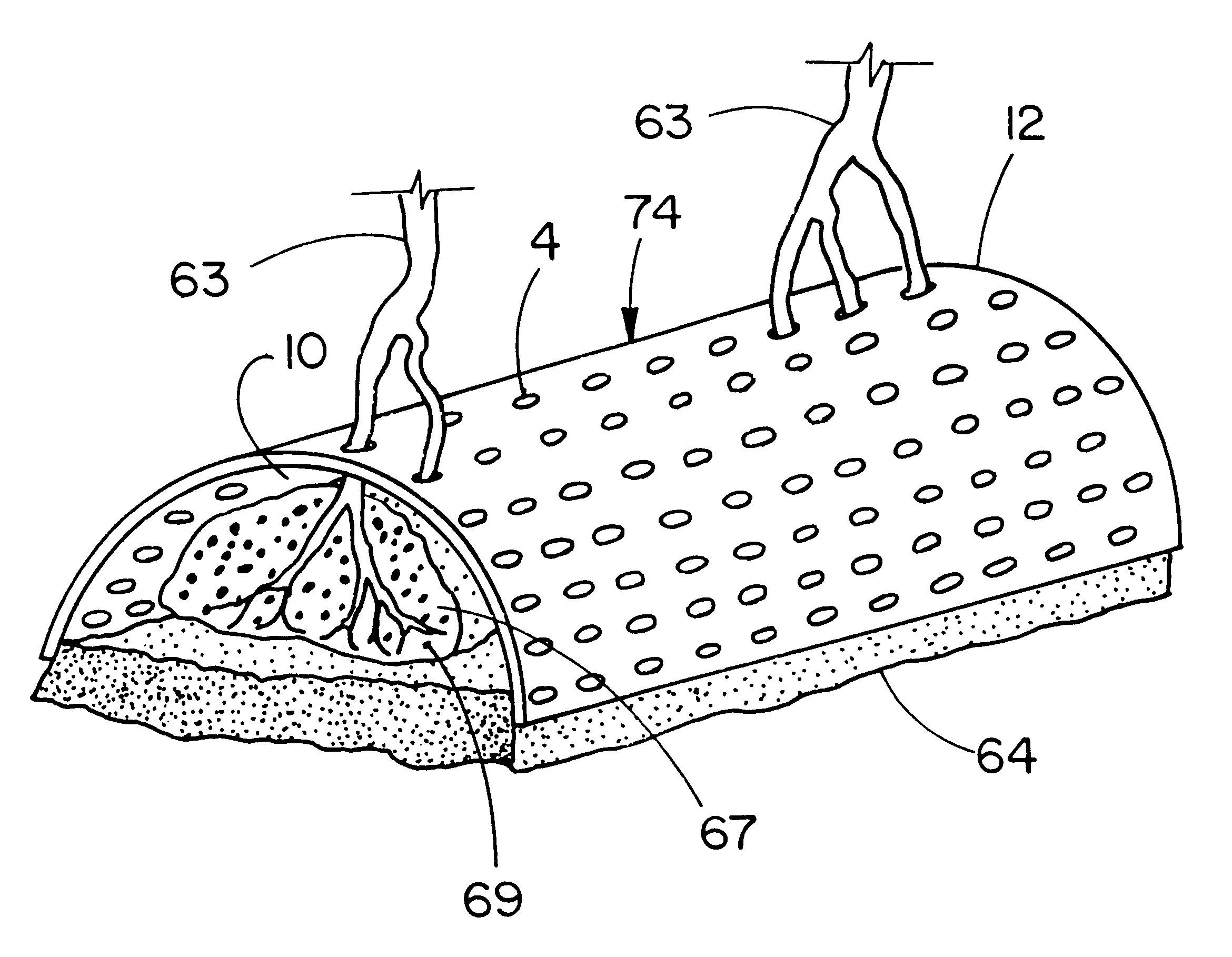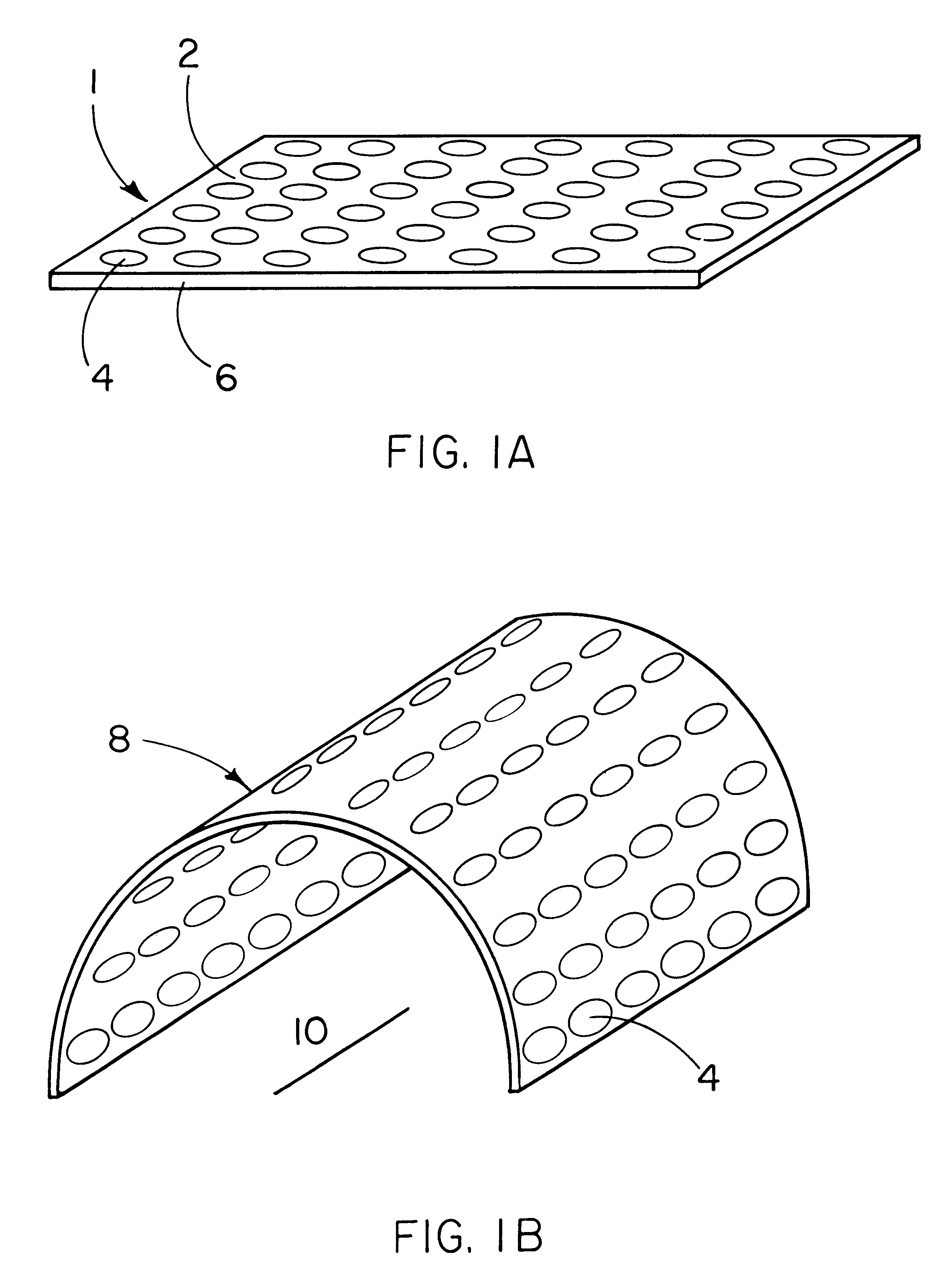Methods and articles for regenerating bone or peridontal tissue
a technology of peridontal tissue and regenerative methods, applied in the field of regenerating bone or peridontal tissue, can solve the problems of limited amount of tissue available for transfer, morbidity at the donor site, and current therapeutic options for increasing bone or periodontal tissue mass
- Summary
- Abstract
- Description
- Claims
- Application Information
AI Technical Summary
Benefits of technology
Problems solved by technology
Method used
Image
Examples
example 1
Periodontal Regeneration with Tissue Exclusive and Tissue Penetrable Devices
Purpose
The purpose of this study is to compare tissue-excluding (TE) and tissue-penetrable (TP) devices, for the ability to regenerate periodontal tissues in surgically created supraalveolar critical size defects. The devices are used to establish a space surrounding the teeth and surgically created defect. In this study, living tissue generation depends on the inherent biological regenerative potential of the subject. No exogenous TGF-Beta proteins or other bioactive molecules are placed in the space established by implantation of the devices in either experimental or control sites.
It is hypothesized that us a TP device, capable of allowing penetration of vascular structures and soft tissue cells into the established space, will result in regeneration of periodontal structures equivalent to TE devices.
Materials and Methods
Six male beagle dogs (age 18-24 months, weight approximately 15 kg), exhibiting intact...
example 2
Membrane vs Space Distribution Delivery of the TGF-Beta Protein rhBMP-2
Purpose
The objective of this experiment is to measure the release profiles of the TGF-Beta protein, rhBMP-2, from ePTFE and PGA:TMC membranes (membrane delivery). In addition, the membranes are treated with various agents to allow them to wet more easily, to change their surface chemistries, or to immobilize the protein through different types of bonds (e.g. ionic and covalent). The membrane release profiles resulting from these treatments are compared to those for a collagen sponge and a hyaluronic acid felt, which are chosen as appropriate carriers to deliver TGF-Beta proteins from a space established by a TP device (spatial delivery). The relative efficacy of spatial delivery versus membrane delivery is thus determined.
Materials and Methods
Four materials were used as carriers in this release experiment: an expanded polytetrafluoroethylene (ePTFE) membrane, a membrane made from a poly(glycol...
example 3
Purpose
The objective of this study is to determine if the configuration (size and shape) of alveolar bone associated with critical size supraalveolar periodontal defects, generated in vivo under the influence of the TGF-Beta protein, recombinant human Bone Morphogenetic Protein-2 (rhBMP-2), can be predictably controlled with the use of a pre-configured TP, ePTFE device when the inductive protein is distributed throughout the space established by the device.
It is hypothesized that implantation of a TP ePTFE space-defining device will allow interaction of rhBMP-2, when delivered from within the space established by the device, with the target host cells and tissues in such a way that generation of alveolar bone tissue can be predictably controlled resulting in formation of bone tissue with desired configuration.
Materials and Methods
Four adult male or female mixed-breed dogs (age 10-12 months, weight $ 20 kg) are obtained from a USDA approved dealer. The animals exhibit intact mandibul...
PUM
| Property | Measurement | Unit |
|---|---|---|
| diameters | aaaaa | aaaaa |
| diameters | aaaaa | aaaaa |
| diameters | aaaaa | aaaaa |
Abstract
Description
Claims
Application Information
 Login to View More
Login to View More - R&D
- Intellectual Property
- Life Sciences
- Materials
- Tech Scout
- Unparalleled Data Quality
- Higher Quality Content
- 60% Fewer Hallucinations
Browse by: Latest US Patents, China's latest patents, Technical Efficacy Thesaurus, Application Domain, Technology Topic, Popular Technical Reports.
© 2025 PatSnap. All rights reserved.Legal|Privacy policy|Modern Slavery Act Transparency Statement|Sitemap|About US| Contact US: help@patsnap.com



